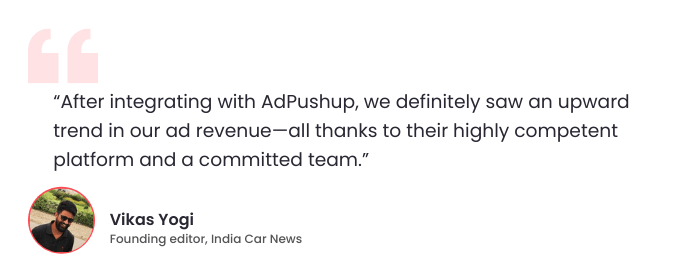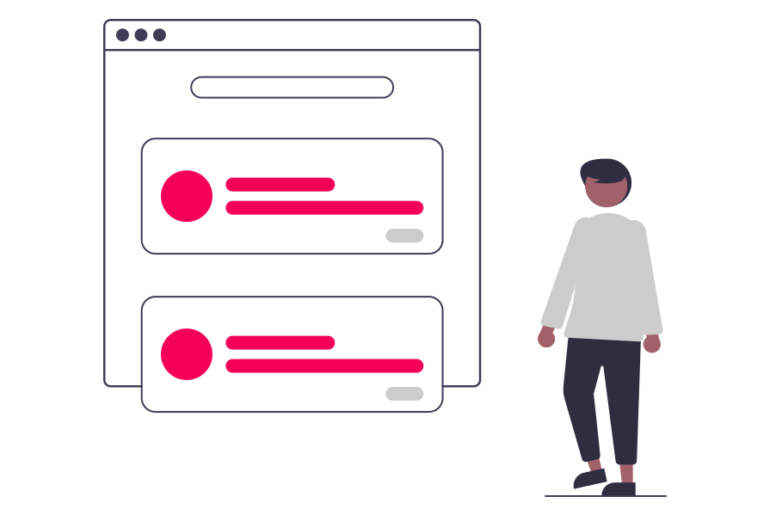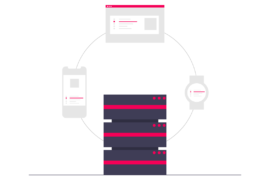Learn more about Prebid Server, the server-side header bidding solution created by Prebid.org to reduce page latency and improve revenue performance.
Digital advertising is an ever-changing world. As it continues to evolve, publishers are seeking ways to increase their ad revenue and improve the user experience of their audience. That’s exactly when the prebid server comes into the picture.
After the outstanding success of Prebid.js, a client-side header bidding wrapper, Prebid launched its server-side solution.
With third-party cookies leaving the market, prebid server might just be the solution we need to keep the adoption rate of header bidding intact.
This is why we decided to post an explainer to provide an in-depth understanding of this solution and evaluate its potential.
What is Prebid Server?
Prebid Server is an open-source server-to-server header bidding solution.
With Prebid Server, header bidding auctions run on the server side rather than the user’s browser, which keeps latency in check, resulting in better UX.
When header bidding made it to the market, it was readily adopted by many publishers. And one of the reasons was the transparency it offered as opposed to solutions offered by ad tech giants like Google.
Page latency and limitations in terms of bidders added to the auction were some other common issues with client-side header bidding. To counter that, a server-side solution was launched by Prebid in 2017.
Prebid Server and Prebid.js can easily be used in conjunction—a case of hybrid header bidding. Using these two together allows publishers to run two auction types simultaneously – an opportunity to call multiple demand partners,minimize browser requests, and improve overall ad revenue.
Also Read – What is Prebid.js: Benefits, Drawbacks and FAQs for Publishers?
How Does a Prebid Server Work?
As mentioned earlier, prebid works as an add-on for the prebid.js, and because of it moving client-side bid requests to the server has been made possible.
Here’s exactly how the process takes place –
Here are some key points to understand how a prebid server works:
A prebid server acts as a mediator between the publisher’s website and multiple demand partners, facilitating the real-time auction process for ad impressions.
- When a user visits a publisher’s website, the prebid server sends requests to multiple demand partners, inviting them to bid on the ad impression.
- After that, demand partners receive the request and send their bids back to the prebid server, which aggregates the bids and determines the winning bid.
- The prebid server then sends the winning bid to the ad server. It then decides which ad to serve based on the winning bid and the publisher’s business rules.
- The prebid server ensures the process is fast and efficient, with the whole process taking place in milliseconds.
- A prebid server can be integrated with different ad servers, such as Google Ad Manager (GAM), AppNexus, or others, and can support different ad formats, such as display, video, or native ads.
- Prebid servers provide transparent reporting and analytics, allowing publishers to monitor the performance of their header bidding setup and optimize their revenue.
By using a prebid server, publishers can increase the number of demand partners bidding on their ad impressions and increase the competitiveness of the auction, ultimately resulting in higher ad revenue.
What Are the Benefits of Using a Prebid Server?
Since Prebid Server is a server-side header bidding solution, most benefits are similar to the usual difference between client- and server-side.

Improved transparency
The open-source, community-managed nature of this technology makes it easier for publishers to view bid transaction data. Comparing it to Amazon’s TAM and Google’s Open Bidding, ad tech giants that function like a walled garden, Prebid Server offers a clearer view of the supply chain.
Reduced Page Latency
Another reason to choose server-side implementation is reduced latency. As mentioned earlier, server-side header bidding takes the auction to the server rather than the user’s browsers (as in the case of client-side header bidding).
This allows page content to load independently of the ad auction, allowing time for both content to load and the server to conclude the auction.
Add Multiple Demand Partners
Since making multiple ad calls is not an issue with server-side auctions, publishers have a chance to add more bidders.
With new bidders entering the market every day, this is the right solution to leverage most (if not all) of the demand in the market.
It is recommended to set auction timeouts, irrespective of how many bidders are added to the Prebid setup. This is to make sure that the auctions finish at the right time for users to view an ad.
Unified Auctions
Instead of managing and setting up each ad unit separately for different wrappers, publishers choose Prebid for unified auctions. With Prebid unified auctions, publishers can get the performance reports of all bidders in one place. The same can be expected from Prebid Server—to unite both client-side and server-side auctions and provide publishers the real benefits of unified auction.
Also Read – How Can Publishers Take Advantage of Prebid Header Bidding?
What is the Drawback of Prebid Server?
For some publishers, the open-source design of Prebid, which is often seen as its most valuable attribute, can also be a drawback. As Prebid is transparent due to its open-source nature, publishers should take proactive measures or find a technically competent partner to effectively manage it.
However, some publishers who lack the technical expertise to manage Prebid have resorted to proprietary wrappers, but this approach also has its drawbacks. The variations in counting methods and payment processes can pose challenges for buyers and sellers in conducting business efficiently.
Therefore, it is important for publishers to carefully evaluate their technical capabilities and resources before deciding whether to use Prebid or a proprietary wrapper, and to choose the solution that best meets their needs.
Also, here’s a quick video that’ll help you in choosing the right header bidding technology:
How to Get Started With a Prebid Server?
- Find a server to host auctions
To get started with Prebid Server, publishers first need a server to host the auctions. They can either set up their own server or partner-up with hosted servers that support Prebid auctions (like AppNexus and Rubicon Project).
- Update or download Prebid.js with server setup enabled
Publishers who are already using Prebid.js need to update it with Prebid Server code. And the rest of the publishers need to download the Prebid.js with Prebid Server enabled.
- Add adapters and customize the campaign
The next steps involve configuring adapters and setting up the auctions. Just like Prebid.js, Prebid Server also requires engineering interventions. Publishers who are already using Prebid.js can ask their existing teams to enable the server-side set up as well.
AdPushup’s Header Bidding Solution
Merely deploying header bidding in your ad stack isn’t enough. Consistently optimizing it with technical improvements is the need of the hour. This is what AdPushup’s header bidding solution does. Through our multiple optimization features using data science and machine learning, we help publishers maximize their yield.
With our header bidding solution, you get:
- Automatic demand partner selection according to optimum requirements
- Smart timeout management
- Freedom to bring your own demand
- Bid monitoring and discrepancy resolution
Schedule a call today to know more about our product capabilities.
Final Words
Being open-source and community-driven makes Prebid a reliable solution for many sellers. However, with that, it brings challenges to either have engineering abilities to set up and monitor campaigns or hire someone with expertise.
Server-side auctions are preferred for their advantages like unified auction, reduced latency, and better user experience. Server-side auctions previously had issues like compliance with client-side auctions, additional set up to run targeted ads, and limited demand. Most of these challenges have been solved now.
Prebid Server offers a solution to these problems. With over 300 bidders, limited demand is no longer a concern. The use of third-party cookies will soon be off the market, solving concerns of relying on additional user-matching layers specifically to run the server-to-server auction. The fact that Prebid Server is a Prebid.org product, means that it supports the integration with the client-side auction (Prebid.js) as well.
Finally, the success of the Prebid Server depends on the publisher’s revenues. The more revenue they make, the faster adoption will happen, and buyers will continue to buy impressions in a transparent ecosystem.
FAQs
It is an open-source server-to-server header bidding solution. A number of key use cases are supported: mobile apps, AMP, and server-side web with Prebid. Long-form video and audio ad inclusion scenarios using JS.
It determines which bidders to use and which parameters to use. The appropriate demand partners are then contacted. Responses are collected by Prebid Server. Clients receive winning bids from Prebid Server.
Prebid Server facilitates server-to-server header bidding. With Prebid, it supports a number of key use cases: mobile apps, AMP, and server-side web. Ad inclusion scenarios such as long-form video and audio can be done using js, as well as server-side ad inclusion. Analytics are also available as an option.

Deepak has a keen eye for detail and a deep understanding of the ad tech landscape. Whether it’s through in-depth articles, thought-provoking insights, or compelling storytelling, he’s dedicated to helping people navigate the complex world of ad tech with the simplicity of his words.








